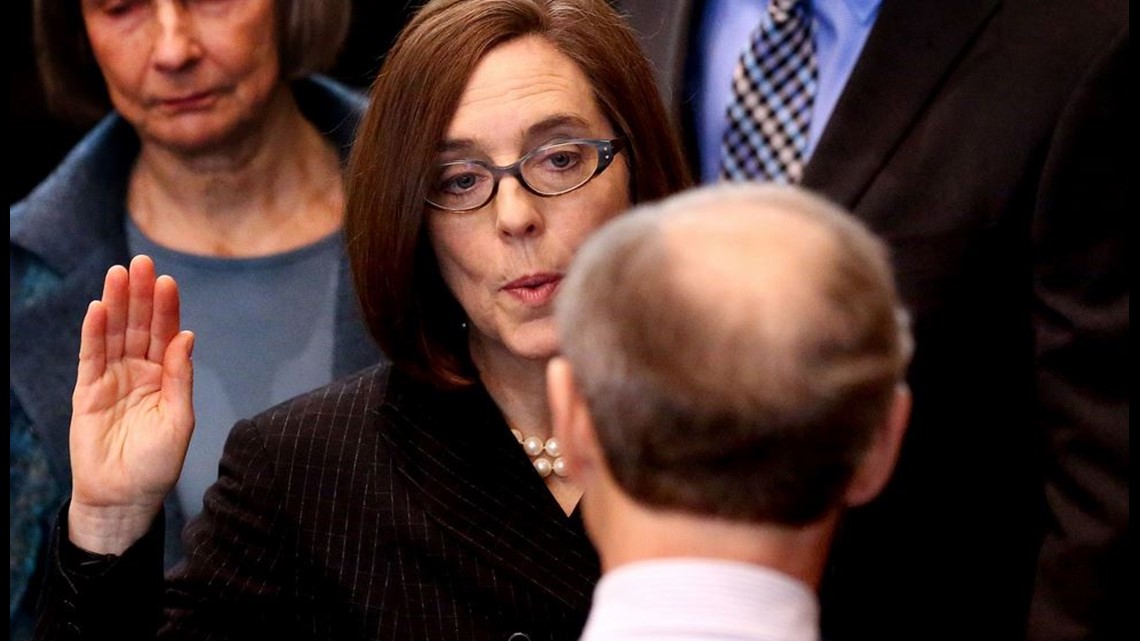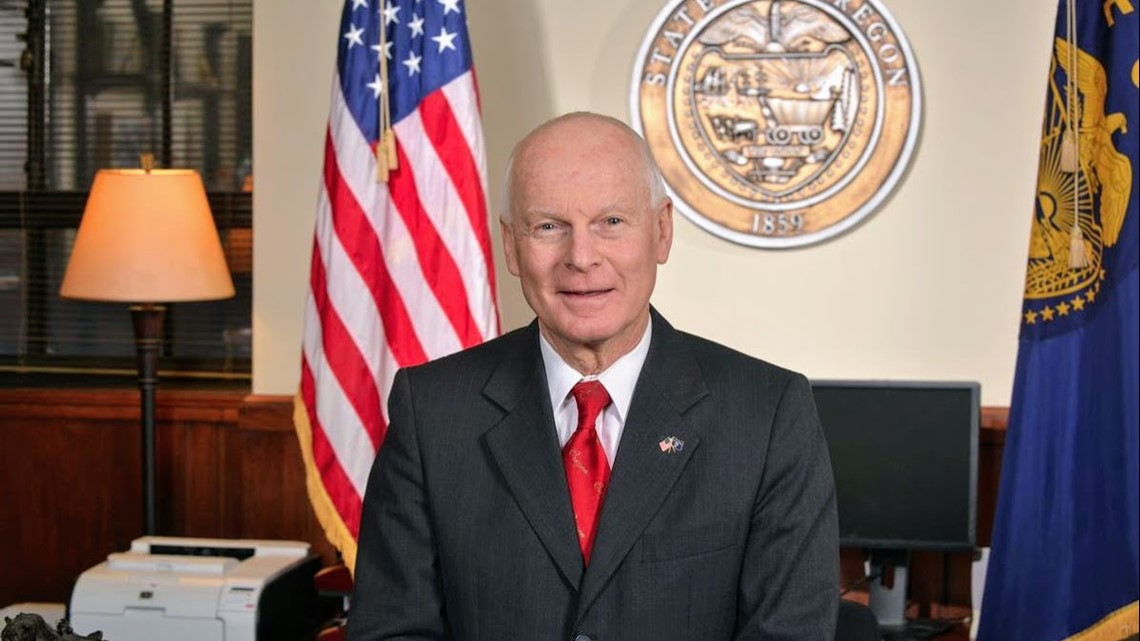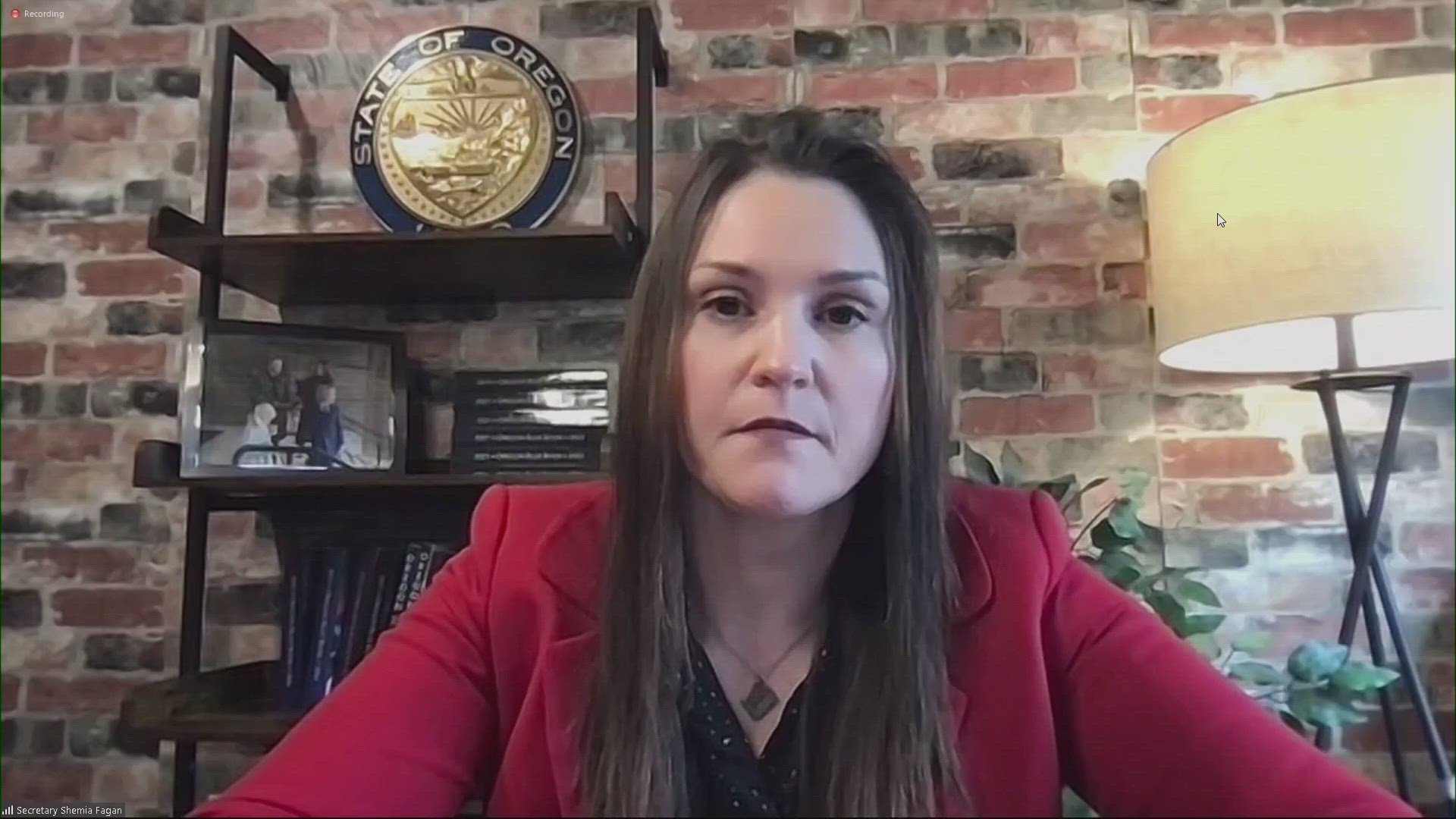SALEM, Ore. — The impending departure of Secretary of State Shemia Fagan means that Oregon will, for the third time in less than 10 years, find itself in need of a new secretary of state midway through a term.
Fagan announced her resignation Tuesday amid an ongoing ethics scandal after Willamette Week reported that she'd been working a lucrative side job as a consultant for a troubled marijuana dispensary chain while her own office was auditing the industry.
In the short term, Deputy Secretary of State Cheryl Myers will step in as acting secretary of state after Fagan's resignation takes effect on Monday. After that, here's what the replacement process looks like for statewide elected officials:
Vacancies in statewide offices
If an Oregon governor leaves office before the end of their term, the Oregon Constitution specifies that the secretary of state automatically becomes governor. That's how former Gov. Kate Brown first took the office in 2015 when former Gov. John Kitzhaber resigned.
If any other statewide elected official leaves early, the governor appoints a replacement — including replacing themselves if they leave a lower office to become governor. Shortly after succeeding Kitzhaber, Brown appointed Jeanne Atkins to serve out the remainder of her term as secretary of state.


If the vacancy occurs during the first half of an elected official's four-year term, there will be a special election to choose a successor for the second half. That's why Brown faced off against Bud Pierce in a 2016 special election; they were running to serve out the final two years of Kitzhaber's term.
In this case, Fagan was elected in 2020 and is already more than halfway through her term, so Gov. Tina Kotek will appoint a replacement who will serve through to the end. The next secretary of state election will be the regularly scheduled one in November 2024.
Appointment restrictions
There are restrictions on who the governor can appoint, the foremost of which is that the replacement must be from the same political party as their predecessor. Fagan is a Democrat, so in this case that means the replacement Kotek appoints must also be a Democrat.
That restriction applies even if the governor and the outgoing secretary of state are from different parties, as was the case with Brown and former Secretary of State Dennis Richardson. When Richardson died in 2019, Brown appointed Republican Bev Clarno to replace him.


Brown said she chose Clarno in part because the then-83-year-old former Oregon House Speaker was only interested in finishing Richardson's term and did not want to run for reelection. That was Brown's own preference, however; there's no rule prohibiting appointees from running for another term.
The appointee assumes all the powers and responsibilities of the office for the remainder of the term, with one notable exception: they do not become part of the automatic order of succession if the governor leaves office prematurely.
As an example, if Kotek were to prematurely leave office next year, Fagan's appointed replacement would not become governor. The line of succession would skip the secretary of state and pass to the next-highest official: in this case State Treasurer Tobias Read.
No exact timeline
There's no official deadline to choose Fagan's replacement. Oregon law only specifies that the governor can start the replacement search process as soon as a resignation is announced, even if it has not taken effect yet. Brown's selection of Clarno was announced about a month after Richardson's death.
Kotek hasn't put forth a timeline of her own; she released a statement Tuesday saying that her office would start looking for a replacement and that during the process her office would work to support the staff in the secretary of state's office and make sure the situation doesn't disrupt the May 16 election.
A spokesperson for Kotek's office said Wednesday that the governor is visiting multiple counties this week for her listening tour and will release more information on the replacement process next week.

